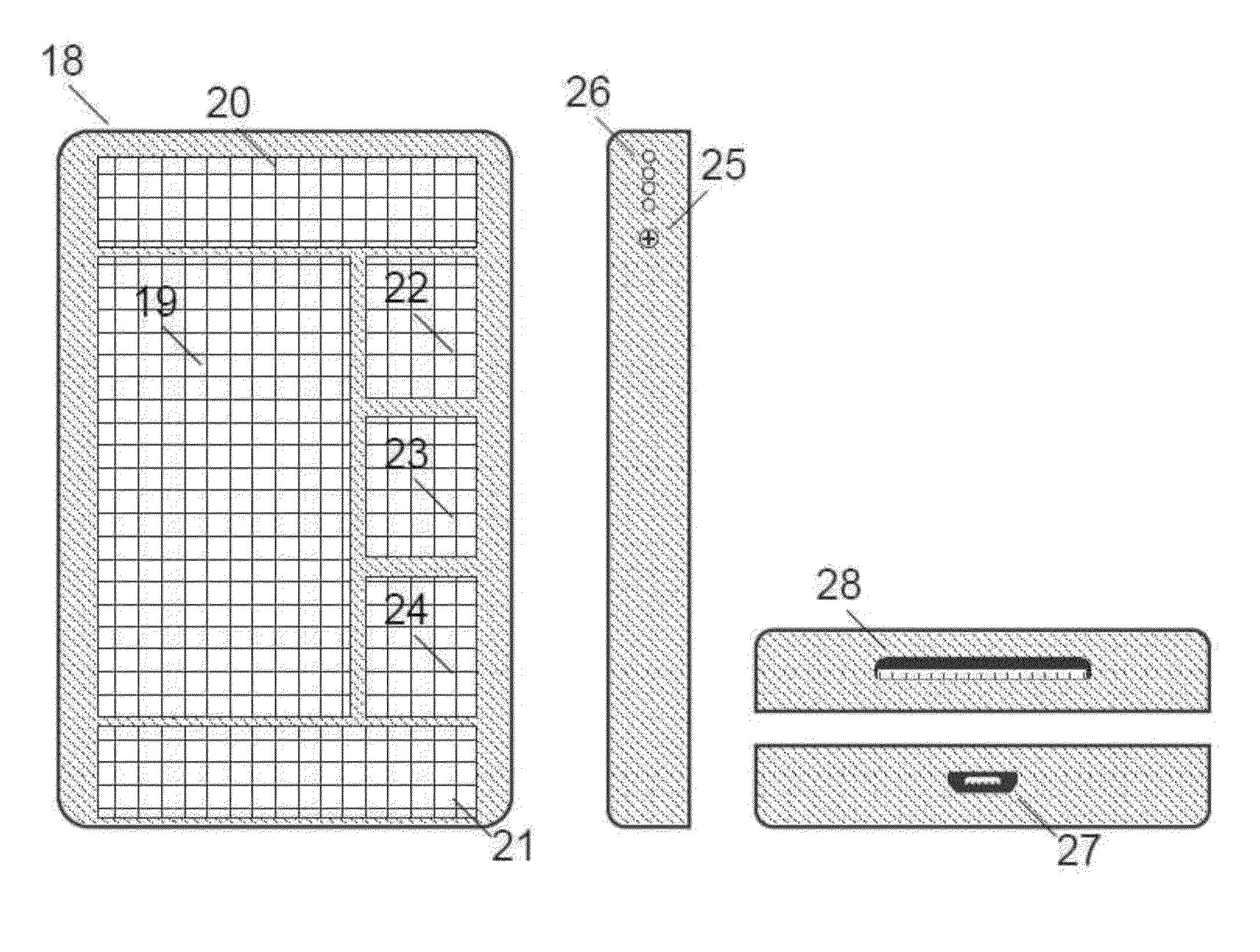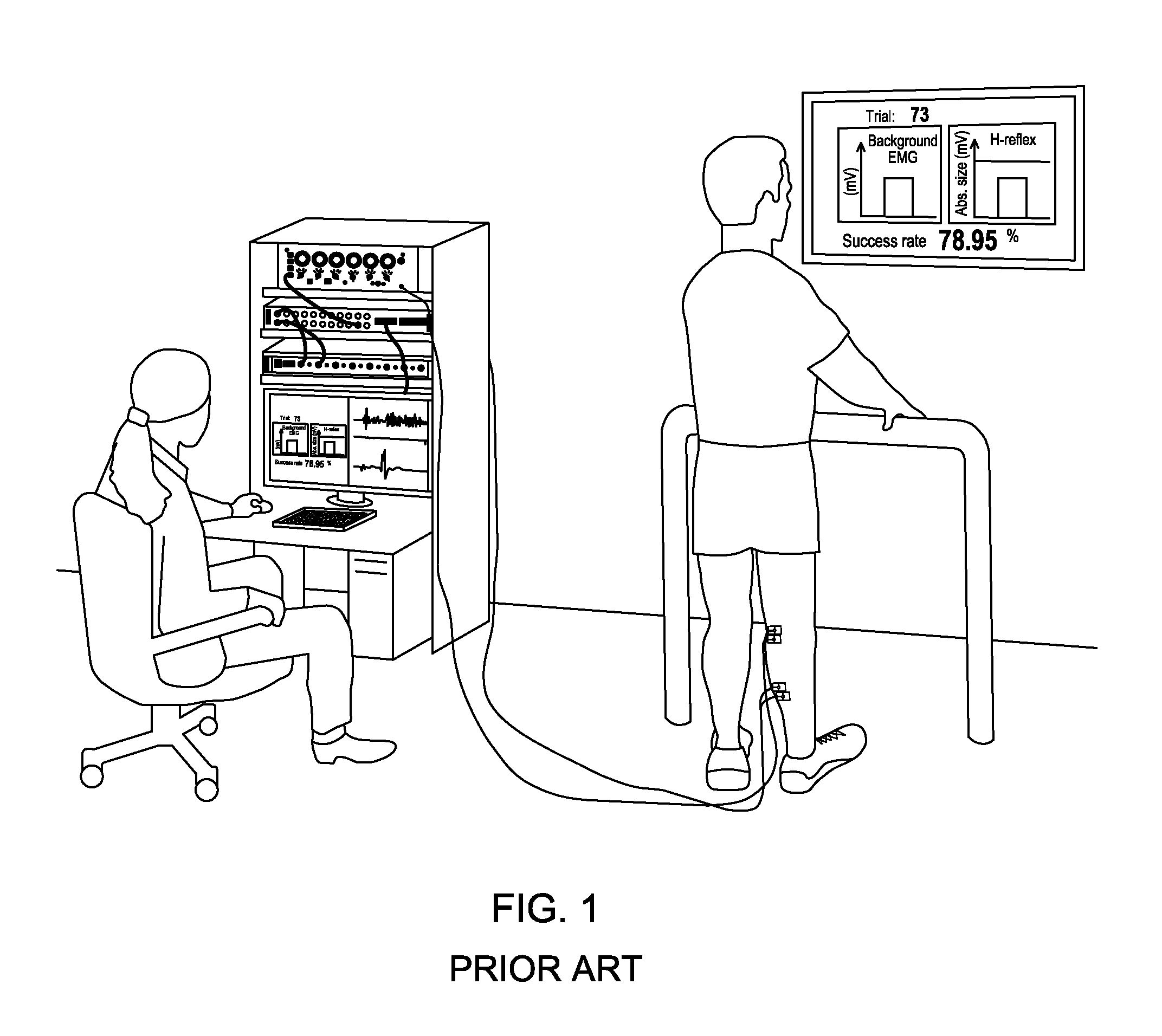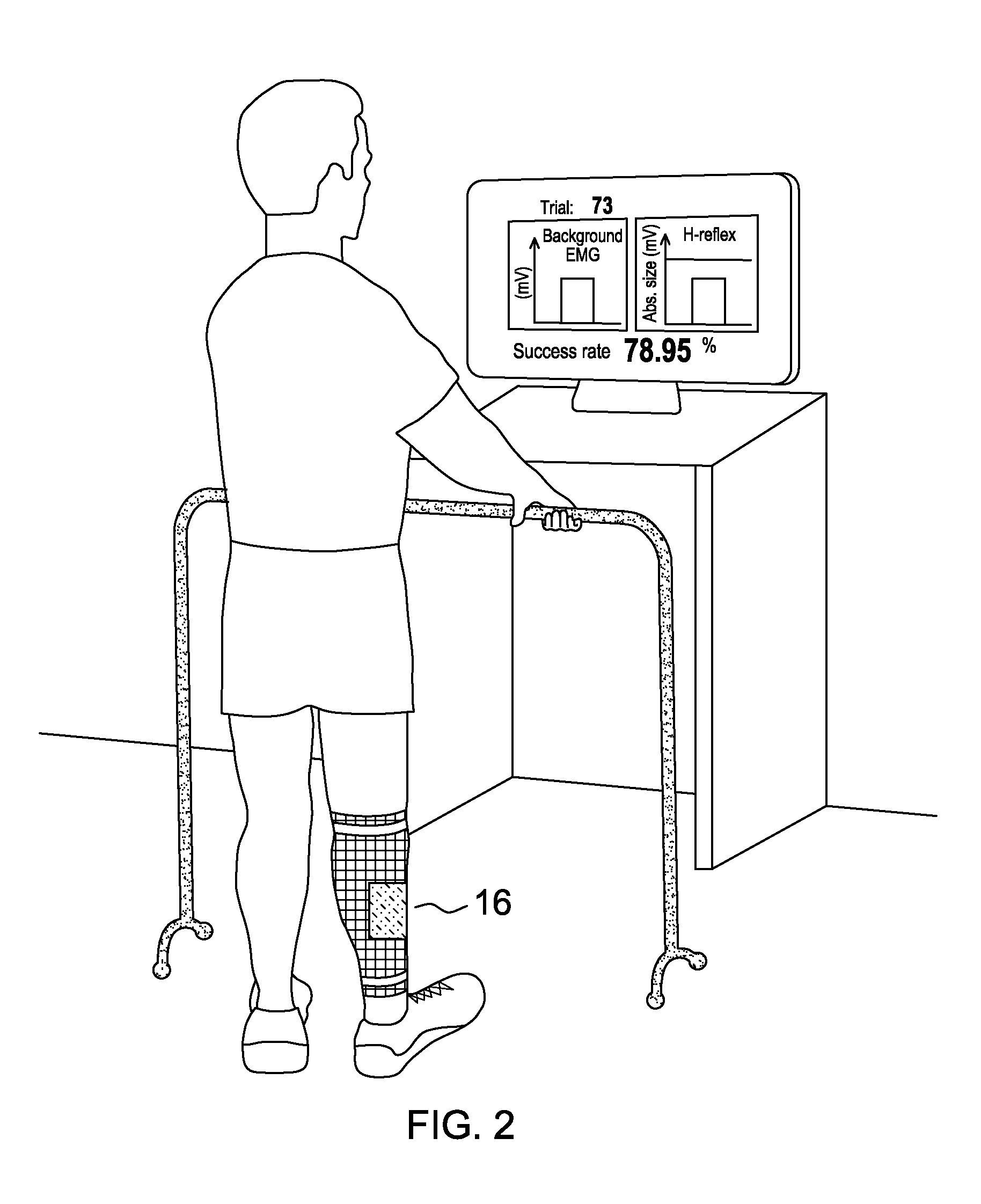Method and device to restore and/or improve nervous system functions by modifying specific nervous system pathways
a specific nervous system and pathway technology, applied in the field of neurosurgical rehabilitation, can solve the problems of lack of methods, devices, systems, etc., and achieve the effect of restoring or improving the nervous system function of a subject, restoring or improving the function of the nervous system, and targeting neural plasticity
- Summary
- Abstract
- Description
- Claims
- Application Information
AI Technical Summary
Benefits of technology
Problems solved by technology
Method used
Image
Examples
example 1
Operant Conditioning of Rat Soleus H-Reflex Oppositely Affects Another H-Reflex and Changes Locomotor Kinematics
Overview
[0114]H-reflex conditioning is a model for studying the plasticity associated with a new motor skill. We are exploring its effects on other reflexes and on locomotion. Rats were implanted with EMG electrodes in both solei (SOLR and SOLL) and right quadriceps (QDR), and stimulating cuffs on both posterior tibial (PT) nerves and right posterior femoral nerve. When SOLR EMG remained in a defined range, PTR stimulation just above M-response threshold elicited the SOLR H-reflex. Analogous procedures elicited the QDR and SOLL H-reflexes. After a control period, each rat was exposed for 50 days to a protocol that rewarded SOLR H-reflexes that were above (HRup rats) or below (HRdown rats) a criterion.
[0115]HRup conditioning increased the SOLR H-reflex to 214(±37 SEM) % of control (P=0.02) and decreased the QDR H-reflex to 71(±26) % (P=0.06). HRdown conditioning decreased t...
example 2
Operant Conditioning of a Spinal Reflex can Improve Locomotion after Spinal Cord Injury in Humans
Overview
[0150]Operant conditioning protocols can modify the activity of specific spinal cord pathways and can thereby affect behaviors that use these pathways. To explore the therapeutic application of these protocols, we studied the impact of down-conditioning the soleus H-reflex in people with impaired locomotion caused by chronic incomplete spinal cord injury. After a baseline period in which soleus H-reflex size was measured and locomotion was assessed, subjects completed either 30 H-reflex down-conditioning sessions (DC subjects) or 30 sessions in which the H-reflex was simply measured (Unconditioned (UC) subjects), and locomotion was reassessed. Over the 30 sessions, the soleus H-reflex decreased in two-thirds of the DC subjects (a success rate similar to that in normal subjects) and remained smaller several months later. In these subjects, locomotion became faster and more symmetr...
example 3
Preliminary Studies of the Effects of Soleus H-Reflex Up-Conditioning on Locomotion in Rats after Sciatic Nerve Transection and Repair
[0207]In rats in which the sciatic nerve has been transected and repaired, the nerve regenerates, however many peripheral sensory and motor axons do not reach their correct peripheral targets in muscles and sensory organs. As a result, locomotion is impaired: stance is weak on the impaired side and the rat limps. In preliminary studies, we have examined the locomotor impact of up-conditioning the soleus (SOL) H-reflex after sciatic transection and repair while regeneration was occurring. Rats were implanted with EMG electrodes in right SOL and tibialis anterior (TA) muscles and stimulating cuffs on the right posterior tibial nerve. After control data collection, the right sciatic nerve was transected and repaired. Beginning 2-10 days later, the rat was exposed for 120 days to either control-mode (i.e., transected and control-mode (TC rats)) H-reflex d...
PUM
 Login to View More
Login to View More Abstract
Description
Claims
Application Information
 Login to View More
Login to View More - R&D
- Intellectual Property
- Life Sciences
- Materials
- Tech Scout
- Unparalleled Data Quality
- Higher Quality Content
- 60% Fewer Hallucinations
Browse by: Latest US Patents, China's latest patents, Technical Efficacy Thesaurus, Application Domain, Technology Topic, Popular Technical Reports.
© 2025 PatSnap. All rights reserved.Legal|Privacy policy|Modern Slavery Act Transparency Statement|Sitemap|About US| Contact US: help@patsnap.com



